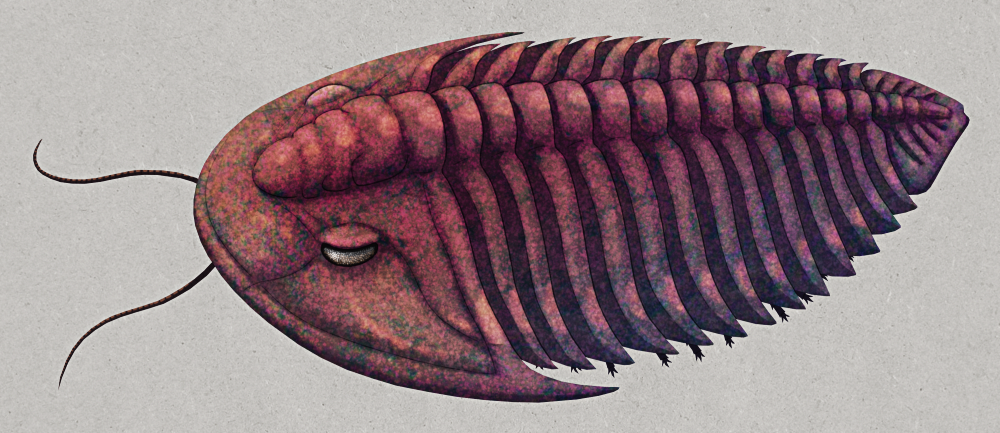The Ptychopariida were some of the earliest known trilobites, first appearing in the early Cambrian about 521 million years ago and surviving until the end of the Ordovician about 444 million years ago. They included some of the most numerous and common trilobite species, and were probably ancestral to multiple other major lineages – including the very last trilobites at the end of the Permian – making them incredibly important in understanding the overall evolution of trilobites as a whole.
…But this group is also one of the biggest wastebaskets in paleontology.
First established in the early 20th century, the ptychopariids seemed to have some fairly good defining characteristics based on their facial sutures, large thoraxes, and relatively small pygidia. But the group quickly became a dumping ground for a massive amount of Cambrian trilobites, eventually containing numerous different families, hundreds of genera, and many more individual species.
Actually figuring out their internal evolutionary relationships also turned out to be extremely difficult – so much so that some paleontologists working on them just gave up trying and arranged the genera names alphabetically instead!
Even cladistic studies from the 1970s onward struggled to make sense of these highly “problematic” trilobites, and any larger-scale analysis was a daunting task due to how huge and diverse the ptychopariid wastebasket had become over the years. Worse, some of the anatomical features the group had been based around were starting to look more like the result of a lot of convergent evolution across multiple lineages than any actual shared ancestry.
Efforts were still made at breaking up the mess, however, with better-understood sub-groups like the Proetida, Harpida, Asaphida, Trinucleida, and Olenida being gradually split off into their own separate orders over the course of the last few decades.

But even by the early 2010s what remained of the Ptychopariida was still paraphyletic at best, more of an “evolutionary grade” of early trilobites than a single lineage, with most of its constituent families also rather poorly defined. There was even a proposal to abandon the group entirely, stating that “it serves no scientific purpose” and that its orphaned contents should be considered “order uncertain” until their actual relationships can be untangled.
Today the “ptychopariids” are in dire need of a full revision – since they were the ancestors of many other major groups they’re still crucial for understanding early trilobite evolution. There may be a salvageable single lineage somewhere in the remains of this wastebasket, even if it’s restricted to just close relatives of the genus Ptychoparia, but until somebody tackles them properly they’re stuck in taxonomic limbo with their name only being used in a loose sense.
